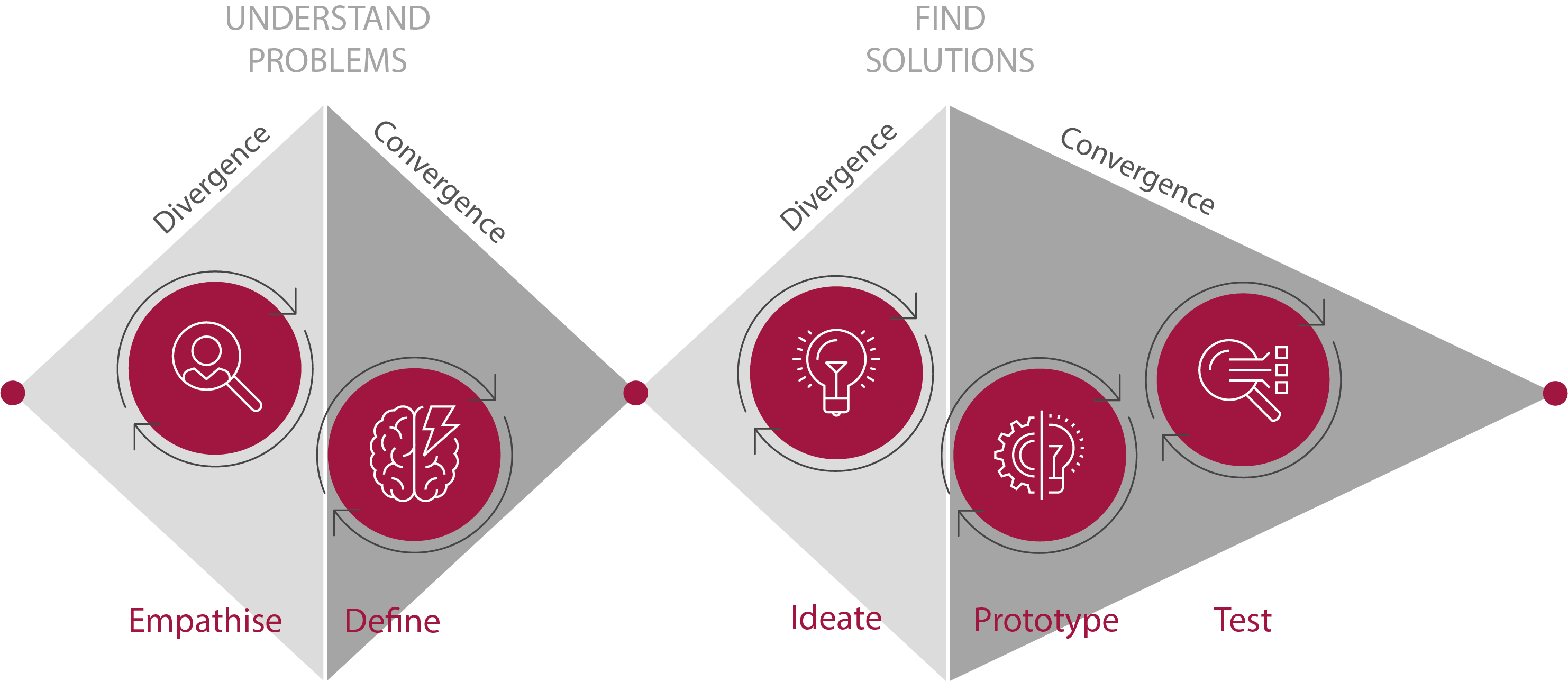Design Thinking Methods Catalogue
A curation of high-quality and helpful design thinking methods

# Empathise
- 5 Whys: Be a child again for a moment and ask for the deeper meaning of everything.
- 6 W Method: Ask basic questions to get a fundamental understanding of the issue.
- Emotional Journey Map: Understanding the emotional roller coaster of the user.
- Interviews: Ask the right people the right questions.
- Mindmapping: Drawing the mental map on paper.
- Shadowing: Follow the people and their actions inconspicuously.
- Search field determination: Become familiar with the problem - from several perspectives.
# Define
- Emotional Journey Map: Understanding the emotional roller coaster of the user.
- Interviews: Ask the right people the right questions.
- Mindmapping: Drawing the mental map on paper.
- Personas: Who are my users and what motivates them?
- Shadowing: Follow the people and their actions inconspicuously.
# Ideate
- 1-2-4-All: Joint generation of questions, ideas and suggestions.
- 2x2 Matrix: Visual categorization of ideas.
- 6-3-5 Method: 6 participants, 3 proposals, 5 rounds and plenty of ideas.
- 6 Thinking Hats: Examination of a question from six different perspectives.
- 15% Solutions: Generation of immediately realizable measures.
- Bodystorming: Experience the context physically and discover new aspects.
- Brainstorming: Quality through quantity: generating new ideas in the group.
- Brainwriting: Brainstorming in silence.
- Crazy 8: Quick and quantitative idea generation.
- Creative Walk: A conscious change of perspective by taking a walk.
- Cursor Vote: Virtually evaluate and select ideas.
- Design Studio: Quick and visual idea generation.
- Dotmocracy: Evaluate and select ideas democratically.
- How-Wow-Now Matrix: How good are our ideas? Evaluation according to feasibility and innovation.
- Idea funnel: Which idea(s) do we want to pursue?
- Idea competition: Inspire creativity with the help of competition and time limits.
- Inspiration Cards: Looking at questions from different perspectives.
- Yes, and...: Jointly pushing ideas forward.
- Reverse brainstorming: Turning challenges upside down.
- Mindmapping: Drawing the mental map on paper.
- NABC: Quickly grasp the essence of ideas.
- TRIZ: Eliminate counterproductive processes by confronting unpleasant aspects.
- Troika Consulting: Mutual support for challenges.
- Walt Disney Method: Examine a problem from three different perspectives.
# Prototype
- Darkhorse prototype: Go for the craziest idea with the highest profit potential.
- Mock-Ups: Looks like a program - and feels like one?
- Paper prototypes: The basic structure of the interactive application on paper.
- Role playing: Experiencing and testing the prototype through the eyes of the user.
- Storyboard: A comic strip that visualizes the sequence of interaction with the application.
- Wizard of Oz prototype: Test functionalities before they exist.
# Test
- User tests: Testing the prototype with users
- Test Capture Grid: Capturing and clustering the findings from the test phase.
- Testing Card: Assistance for a test scenario.
- Wizard of Oz prototype: Test functionalities before they exist.